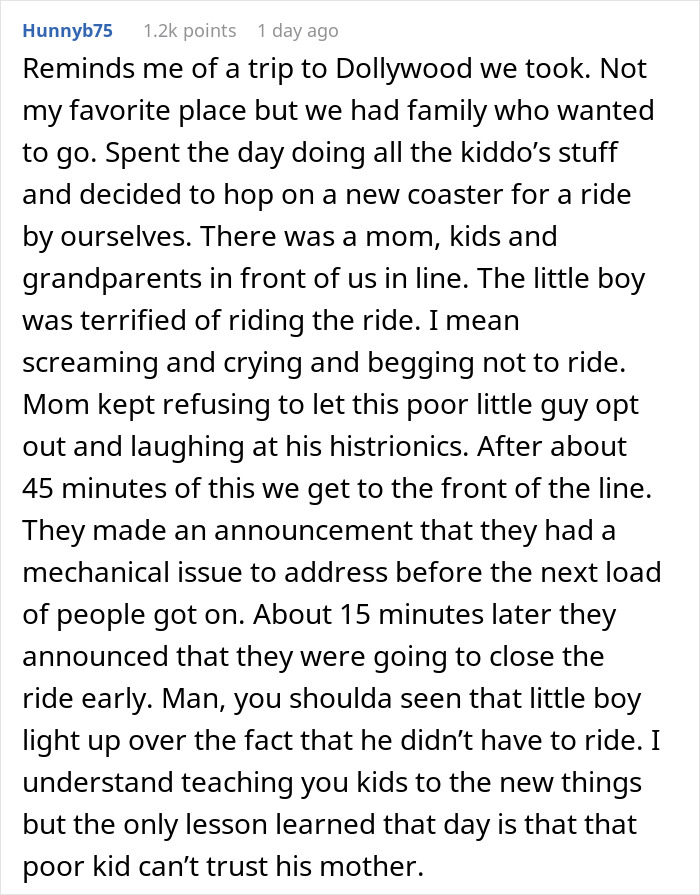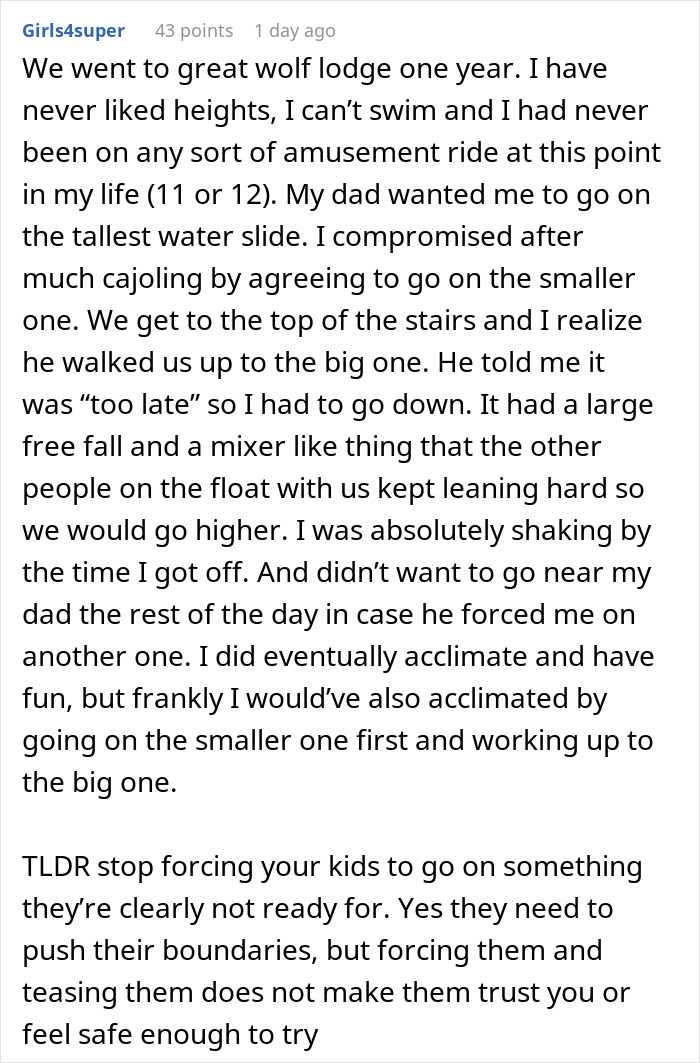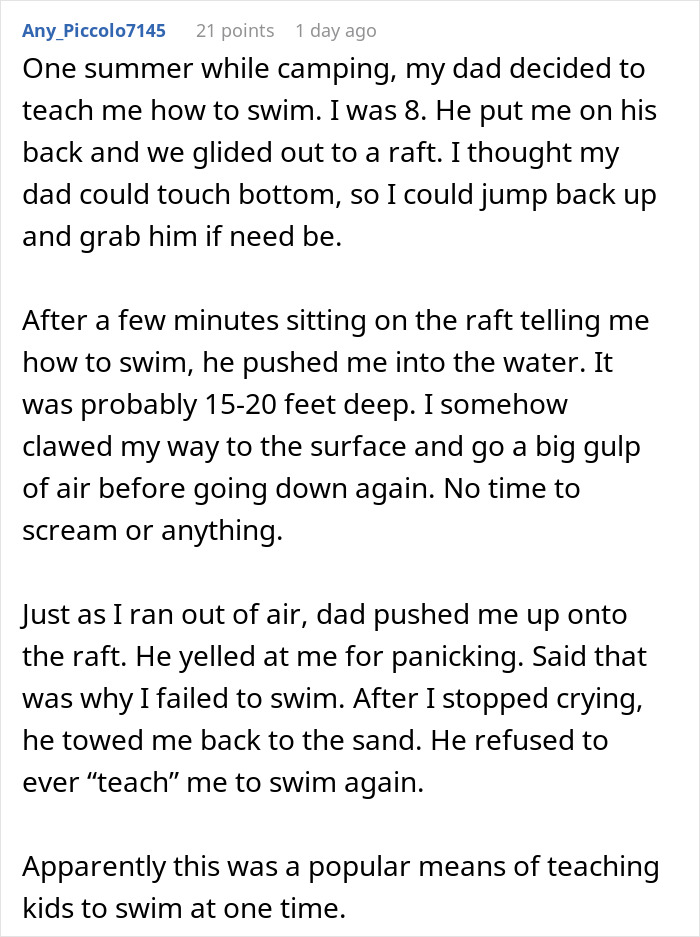Not all parents are emotionally mature and ready to raise children. 36% of the current generation of adults say they experienced emotional abuse during childhood. Parents today are better educated about how certain behaviors can damage a child’s mental health in the long run. Yet, some parents still put their children through stressful situations.
Like the father in this story, who pressured his kid to go down a chute slide. One netizen recently shared a story where a dad pushed his son down a slide against his will. Unable to watch and do nothing, the author, who was an employee there, decided to give the dad a taste of his own medicine.
Going down a high slide can be scary when you’re six years old, and a parent pressuring you to do it only makes it worse

Image credits: ellinnur (not the actual image)
This employee decided to send a bully dad flying down the slide for forcing his kid to act brave
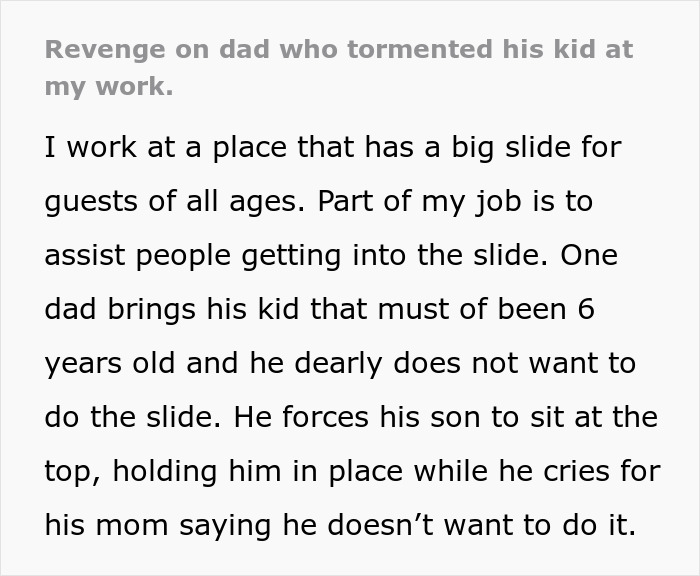
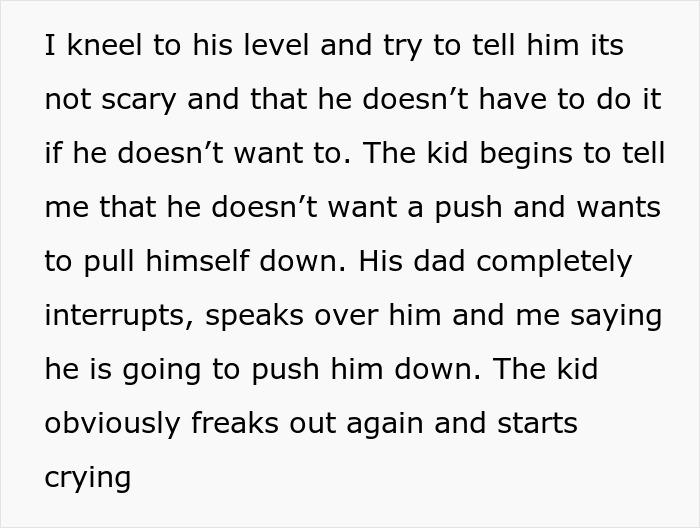

Image credits: Vika Glitter (not the actual image)

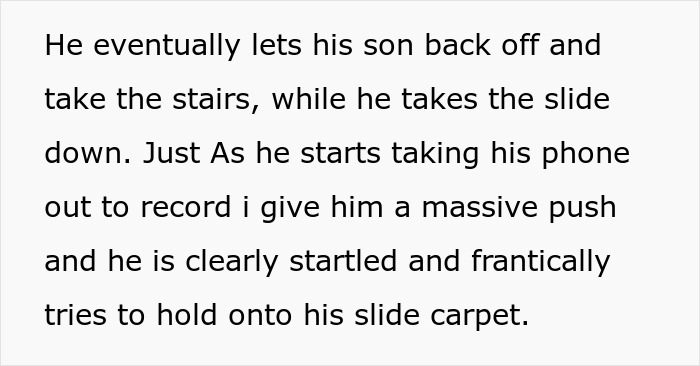

Image credits: CoolingRiver
Parents can help children face their fears without inflicting trauma
It’s normal to have fears, and kids aren’t the only ones with them. Many adults are afraid of heights, dogs, and even the dark. Around 19 million people in the U.S. alone have a phobia of some sort. For some, it might be anxiety about speaking in public, and for others – a crippling agoraphobia that leads to panic attacks.
When you’re a kid, you might easily overcome things like a fear of heights since it’s not a serious phobia yet. That’s why some parents might push their kids to try out things that scare them. However, parents should introduce kids to things that are scary to them gently and gradually. Just like teaching a person to swim by dropping someone in a pool might not be the best idea, pushing a child down the slide is quite questionable, too.
Ron Rapee, a distinguished professor of Psychology at the Macquarie University in Sydney, Australia, says that parents should balance empathy with encouragement. “Children don’t make these things up and are not ‘exaggerating.’ They should not get angry or punish their child when they say they can’t do something.”
Alison Alden, a clinical psychologist at the Anxiety Treatment Center of Greater Chicago, told Vice it’s important kids have autonomy when facing their fears. “You really have to model to them that those situations are safe and push them to enter them themselves,” she explained.

Image credits: Juan Pablo Serrano (not the actual image)
Allowing children to avoid things that scare them might do them a disservice in the long run
In a situation like this one, where the child says they’re scared and don’t want to do something, it’s easy to just let it go. However, experts say that catering to fears might result in even bigger problems and the formation of phobias later in life.
KidsHealth writes that when parents give in to their children’s fears, they’re reinforcing that those things should be avoided. “Stay calm when your child is fearful. Then, provide support and gentle care as you approach the feared object or situation with your child,” they advise.
It’s good when parents push their kids (figuratively) to try out new things. Experts say that it can help build resilience and aid children in discovering what they like and what they dislike.
Harold S. Koplewicz, MD, a child and adolescent psychiatrist, says it’s about pushing them out of their comfort zone. “We know that being able to tolerate discomfort is a wonderful life trait, and in addition to that, it makes them grittier and more resilient.”
Alison Alden also said that when done with compassion, making children face their fears is actually the kindest, most loving thing a parent can do. “That’s how people get over anxiety. The child learns that oftentimes something they thought was dangerous is actually safe and something they can handle. Children develop a sense of confidence and competence by facing their fears.”

Image credits: Ksenia Chernaya (not the actual image)
Parents should gradually introduce children to things that scare them
Things like sliding down a tall chute can be daunting to a child. That’s why they must face their fears step-by-step. Experts call this the stepladder approach. The main idea is to introduce children to the scary things little by little without overwhelming them.
One good example of making a child face their fear of, say, sleeping alone in the dark is to put a temporary mattress on the floor in their parents’ bedroom. Every night, parents can put the mattress closer and closer to the door and eventually put the child in their own bed.
The key is to support the child and push them gently. Busy Bees recommends parents remain calm and answer any questions their kid may have. Children need to have autonomy over such situations, so letting them take the lead is the right approach. They are only getting to know the world, after all, and parents should guide them with curiosity.

Image credits: Yan Krukau (not the actual image)
People were appalled at the dad’s behavior and cheered for the way the employee got revenge


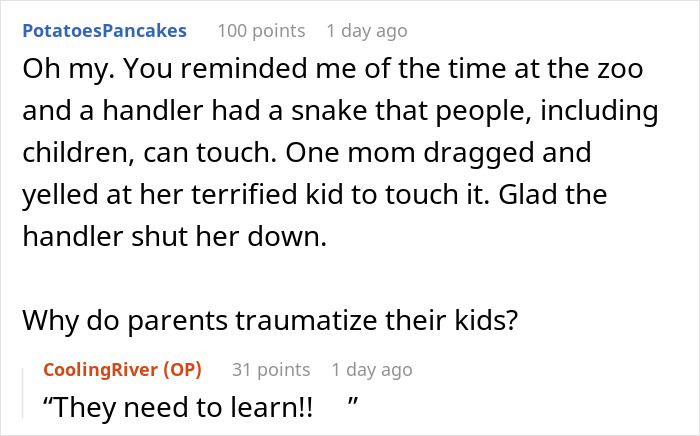
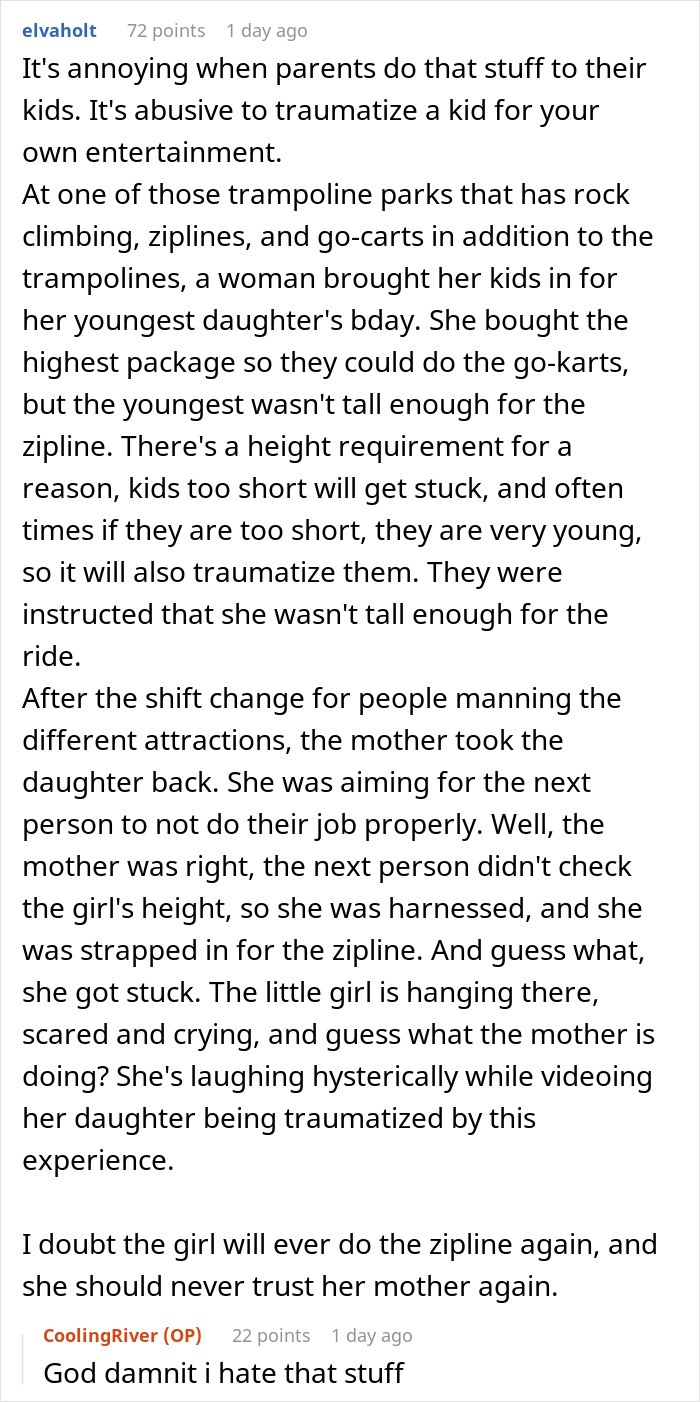


Many folks shared similar stories from their childhoods
